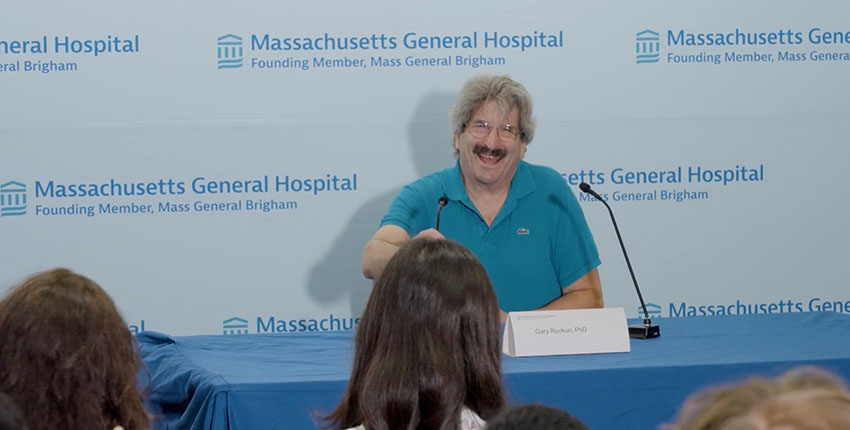
At a glance:
MicroRNAs are critical regulators of gene activity and of the proteins that these genes make.
Gene regulation by microRNA is an ancient mechanism that occurs in multiple organisms.
Understanding how microRNAs work can help illuminate how organisms function in health and how they malfunction in disease.
Gary Ruvkun, professor of genetics at Harvard Medical School and an investigator at Massachusetts General Hospital, has received the 2024 Nobel Prize in Physiology or Medicine for the discovery of microRNAs, a class of tiny RNA molecules that regulate the activities of genes in plants and animals, including humans.
Ruvkun shares the prize with his collaborator Victor Ambros, of the University of Massachusetts Chan Medical School. Ruvkun and Ambros discovered the first microRNAs in animals and demonstrated how microRNAs can turn off genes whose activities are crucial for development.
The two researchers’ discoveries revealed an entirely novel mechanism of gene regulation. Indeed, microRNAs are proving to be fundamentally important for how organisms develop and function, the Nobel committee said in its citation.
New twist in a classic plot
The code of life is stored in DNA, which is tightly guarded inside the cell nucleus. During cell division, DNA instructions from active genes get copied and carried outside the nucleus by messenger RNA into parts of the cell where they are translated into functioning proteins.
In the 1990s, Ruvkun’s and Ambros’ discoveries added a new twist to this classic plot. They identified thus-far unknown characters — microRNAs — that play a critical role, binding to specific messenger RNAs and shutting them down, thereby regulating which genes get translated into proteins and which genes get suppressed. By doing so, these tiny molecules can alter how organisms develop, mature, and function and malfunction.
As potent regulators of gene activity and of the expression of proteins made by these genes, microRNAs have profound implications for disease and health, and Ruvkun’s and Ambros’ discoveries have sparked a revolution in RNA medicine.
The scientists’ work revealed that microRNAs are pivotal regulators of normal development and physiology of animals and plants as well as key players in an array of human diseases, including coronary heart disease, neurodegenerative conditions, and many forms of cancer.
“Ruvkun’s and Ambros’ research elegantly combines evolutionary biology and genetics and reveals a completely novel dimension of gene regulation. This curiosity-driven research is a powerful example of how fundamental discovery can provide insights that illuminate causes of disease and consequently can benefit humanity,” said Harvard Medical School Dean George Q. Daley.






